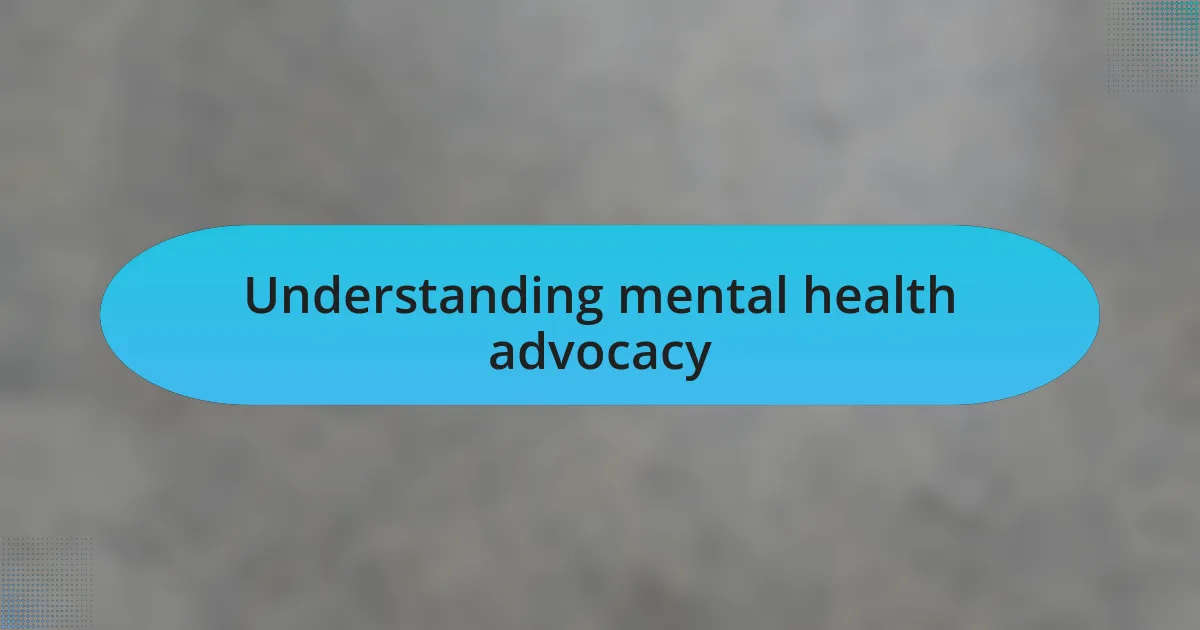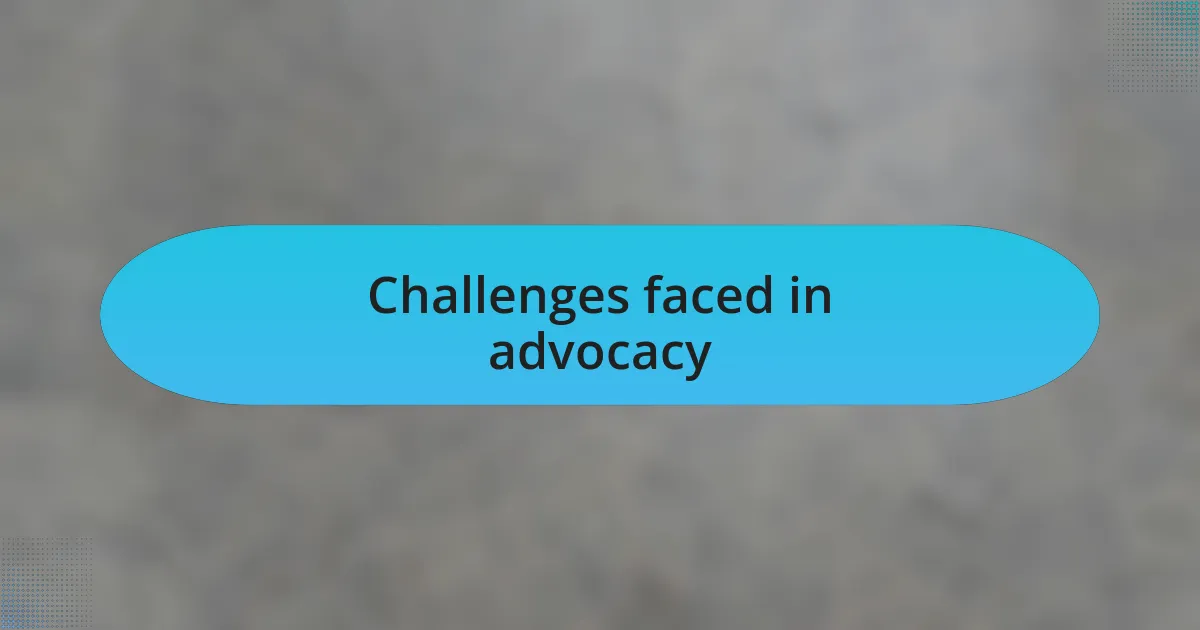Key takeaways:
- Mental health advocacy aims to amplify unheard voices and reduce the stigma surrounding mental health issues.
- Effective strategies include creating safe spaces for dialogue, utilizing social media, and collaborating with support groups.
- Challenges in advocacy involve confronting stigma, navigating bureaucratic obstacles for resources, and ensuring effective communication of available support to students.

Understanding mental health advocacy
Mental health advocacy is about amplifying voices that often go unheard. I remember sitting in a university meeting where a fellow student shared their struggles with anxiety. The room was filled with a mix of silence and empathy, and it struck me how powerful it was for them to express their feelings. Why is it that we sometimes hesitate to speak up about our mental health? It’s precisely this hesitation that advocacy seeks to break down.
Advocacy isn’t just for those who have experienced mental health challenges; it’s for everyone. I’ve found that when I share my own journey, not only do I feel liberated, but I also inspire others to open up about their experiences. Have you ever felt that rush of connection when someone shares their story? It’s a reminder that we’re not alone in our struggles, and that solidarity is a pivotal part of fostering a supportive community.
In my experience, effective mental health advocacy includes educating ourselves and others about the stigma surrounding mental illness. I recall hosting a workshop where we discussed common misconceptions, and the energy in the room shifted dramatically. People began to realize how much understanding could transform our perceptions and interactions. If we are not willing to challenge these misconceptions, how can we expect change?

Strategies for effective advocacy
Building effective advocacy strategies requires a clear plan and a deep understanding of your audience. I remember when I organized a panel discussion at my university featuring both students and mental health professionals. The goal was to create a safe space where different perspectives could collide. By facilitating open dialogues, I saw firsthand how addressing misconceptions helped to demystify mental health for everyone involved.
Another key strategy is utilizing social media platforms to reach a broader audience. One time, I shared a personal post about my struggles, and the response was overwhelming. Feedback flooded in, revealing how many students felt the same way but hadn’t found the words to express it. Have you ever considered how your story might resonate with someone scrolling through their feed? Every post can potentially break the silence and create a ripple effect of courage.
Lastly, collaborating with existing support groups can amplify your advocacy efforts. I partnered with our university’s counseling service during Mental Health Awareness Week, and together we hosted an event that attracted a diverse crowd. Combining forces created an environment where people felt more compelled to engage and share their experiences. Isn’t it remarkable how unity can transform solitary efforts into a movement?

Challenges faced in advocacy
Advocating for mental health often comes with unexpected hurdles. One of my toughest challenges was encountering stigma within my own community. I vividly remember trying to discuss mental health issues in a class setting, only to be met with dismissive comments that made it feel like I was fighting against an invisible wall. Have you ever felt the weight of silence when you knew something needed to be said?
Another significant challenge is the lack of resources and support. I once tried to secure funding for a mental health initiative, and the bureaucratic red tape was overwhelming. I spent countless hours navigating forms and meetings, only to realize that the commitment to mental health lacked backing from those in charge. It’s frustrating to see the need and potential, yet feel powerless to affect change.
Moreover, there’s often a disconnect between mental health initiatives and the students they aim to serve. In hosting events, I found that not all students were aware of the resources available to them. It prompted me to question, how can we truly advocate for change if we aren’t effectively communicating what’s out there? Engaging directly and empathically with students helped bridge that gap, but it’s a continuous effort that often feels like running a marathon.